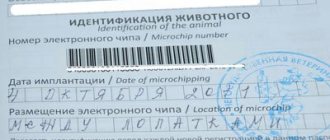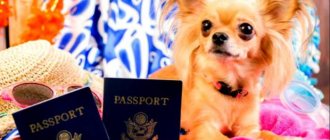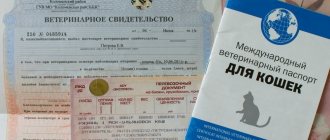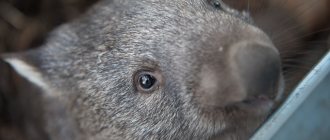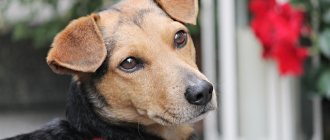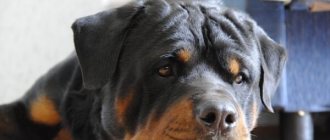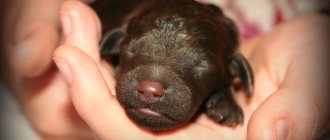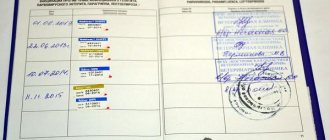Why do you need a veterinary passport?
A veterinary passport is a document that confirms that the dog is healthy and in good shape. It is needed in many situations when the dog and its owner have to come into contact with other people. Application of a veterinary passport:
- Proof of ownership. The owner of the dog is indicated in the passport, and if the pet is lost, the person can easily confirm that he is the owner.
- Trips. A document is needed to buy a dog ticket for a train or plane (and sometimes for a bus). If the dog is not going on a trip, a passport is required for foster care.
- Bites. All dogs bite, but a confirmed rabies vaccination in a pet saves the bitten person from the need for treatment, and the owner from unnecessary disputes about rabies.
- Exhibitions and breeding. This only applies to purebred pets. A passport is a confirmation of pedigree, proof of the breeder’s honesty.
Most dogs get along just fine without a veterinary passport, and their owners mistakenly think that there is no problem. But in those situations when a document becomes necessary, the owner runs the risk of not having time to complete it on time, so it is better to take care of the problem of a dog passport in advance.
What documents should a puppy have?
If you are buying a puppy with documents for a lot of money, it is useful to know at least a little about what documents the puppy should have. How to deal with the abundance of different clubs, association organizations, etc.?
There is only one serious canine organization in the world - the FCI (International Canine Federation).
It unites dog handlers from most countries of the world, of course, there are large countries such as the USA, Great Britain, which are not members of the FCI, but agreements have been concluded between the kennel clubs of these countries and the FCI on the mutual recognition of documents.
In Ukraine, the only organization that is part of the FCI is the KSU (Cynological Spilka of Ukraine).
The KSU operates on a territorial principle, that is, regional, city, district, etc. clubs. You need to make sure that the puppy you are about to purchase has documents issued by a club that is a member of the KSU. To do this, ask the breeder directly for the puppy's puppy card, they are of the same sample as in the photo.
My advice, do not buy puppies from organizations or people who are not members of the KSU.
Of course, when purchasing a puppy with KSU documents, you do not guarantee yourself the acquisition of a champion, but you have a guarantee that you will not buy a mongrel and that the puppy you buy will correspond to the breed that is written in the documents, you have, and this is already not a little.
The first thing a puppy belonging to any breed should have is a document that confirms that it belongs to that breed. For an adult dog, this document is called a pedigree, but for a puppy, in our country, it is a puppy card.
I would like to say that the puppy card is an “invention” of exclusively domestic (Soviet) dog breeding. In other countries there are no puppy cards and the puppy immediately receives a pedigree. This is naturally connected with the desire of clubs to earn as much money as possible, because having bought a puppy and received a puppy, you will be forced to come to the club, become a member of the club, paying entrance and membership fees, pay for the examination of your puppy and pay for the pedigree itself , the result will be quite an impressive amount. You will have to do all this only if you decide to engage in breeding with your pet or make him a star of exhibitions. If you are buying a dog purely as a friend, then you can safely put the puppy card on the shelf and forget about it.
The second thing that is desirable from the puppy’s documents is a veterinary passport, which should contain notes about vaccinations, what vaccine and when your puppy was vaccinated. You need to understand that the veterinary passport that the breeder gives you is not a document and is for informational purposes only.
You must receive a real veterinary passport at your place of residence in a veterinary hospital, preferably a state one; this is important when preparing documents for traveling abroad. The veterinary passport must be numbered in the established form, written out in your name and must be registered in the book located in the veterinary hospital
If there is no veterinary passport, then simply write down when and what vaccine the puppy was vaccinated and when he was dewormed. If you doubt that the puppy is vaccinated, vaccinate it yourself as soon as you buy it.
https://gafki.ru/sobaki/dokumenty-rkf-chto-eto.htmlhttps://sobaky.info/dokumenty-na-sobaku/https://dresirovka.com.ua/pokupka-shchenka/dokumenty-pri- buy-shchenka
What is an international veterinary passport?
Traveling with a dog
An international veterinary passport for a dog must be filled out in two languages - Russian and English.
It is needed if the dog travels with its owner abroad - on vacation or to an exhibition. When registering, you need to clarify the rules for keeping animals and the timing of vaccinations in the country where you plan to go. If everything matches, the owner and dog can go. Note. The same documents are required for dogs and cats. They are filled out by the owner or doctor and must be certified by the veterinary clinic.
Is it necessary to obtain passports for animals?
Passports for dogs, cats and exotic animals are issued at your own request. There are no mandatory requirements for obtaining this document in Russian legislation.
Why does my dog's breath smell like rotten meat?
A veterinary passport for a hunting dog must be presented at veterinary control when visiting other countries (including Belarus and Ukraine) or regions of the Russian Federation. Also, a dog passport will be useful for show animals to participate in competitions. In addition, a veterinary passport helps you track medical information.
Important! It is issued after primary vaccination or antiparasitic treatment. The document is usually filled out by a doctor at a veterinary clinic.
Differences between an international veterinary passport and a regular one
For domestic and international use, different types of animal passports are used. Main differences:
- An internal passport is valid only in Russia, an international passport is valid throughout the world.
- Language: within the country - only Russian, abroad - Russian and English.
- Different forms and seals are used.
- Stamps are not required in an internal document; in an international document, you cannot do without them.
A veterinarian together with the owner of the animal can issue dog passports.
We take into account temperament
If you are having difficulty choosing a name for your puppy, you can pay attention to its habits. Temperament is an extremely unique factor that can influence a pet's name, as all pets behave differently in different situations.
Original ideas
It is recommended that Husky dogs be given names with the letters “r”, as they will then respond more quickly to such a nickname. If your pet does not show much activity, then a nickname such as Gloomy or Gloom (for boys), Oda or Pandora (for girls) may be suitable as a nickname for it. If the dog, on the contrary, is restless and likes to spend time actively, then he can be called Thunder, Thor (for boys) or Thunderstorm, Juga (for girls).
Is it necessary to get a veterinary passport?
By law, the owner is not required to issue a dog or cat passport. If the animal does not travel, does not participate in exhibitions, and there are no problems with friends who are ready to care for the dog while the owner is away, then the dog can live its entire life without documents. This is how most pets live, even purebred ones.
But there are several reasons to still draw up a “little book”:
- Convenience. The most important information from the veterinary passport for a dog is the dates of vaccinations and the time when they need to be repeated. You won’t have to remember when it’s time to see the doctor - all the dates will be immediately before your eyes.
- Requirements of the law - during a trip, during foster care, in conflict situations.
- The club's requirements are for purebred dogs that participate in exhibitions and breeding.
A dog owner with a passport feels more confident and avoids many troubles.
Confident dog with documents
Are there differences in behavior?
All puppies behave exactly the same in the first days and weeks of life, but as they grow older, they may already exhibit different behavioral characteristics. The sex of the baby is most clearly revealed after 3-4 months, when males begin to mark their territory and take the appropriate position during urination. Although females also have an instinct to mark territory, in males it manifests itself more strongly and frequently. So the baby can often sniff various objects, places, and then urinate quickly and little by little. Also, by about 6 months, male dogs will try to raise their paws while urinating, and female dogs will still squat.
As for other aspects of behavior, they are very individual and cannot always talk about gender.
What should be included in the description of the animal
You cannot fill out the document at will; you need to buy a special form. Registration of a passport is a paid procedure, but adding new marks to an existing one is free. In addition to vaccinations, which are the subject of most of the entries, other information is also important.
Type of animal in the passport
On the first page indicate the basic data of the animal and the owner.
Information about the animal:
- species (dog);
- floor;
- date of birth (exact or approximate);
- breed;
- nickname (in full);
- coat color;
- photo.
Be sure to fill out the name and address of the owner. If desired, he can enter data about the pet’s chronic diseases, allergies, and intolerances. This is not necessary, but will be very helpful if other people need to look after the dog. This way they will be informed what actions are harmful to the pet and will not do them.
Gender of the dog in the passport: how to indicate
Veterinary terms denoting the gender of dogs have become firmly entangled with curse words. To avoid unwanted associations, documents write “male” or “female” or indicate gender with graphic icons common in biology (spear of Mars and mirror of Venus). It is permissible to use the words “male” and “bitch” if this does not cause irritation to the owner.
An international passport uses the words “male” or “female” or graphic icons.
Note! For cats, the same definitions are used - "male" and "female", but you can use the words "cat" and "cat".
Gender is indicated in the passport
Chipping
The chip allows you to quickly find your pet if it gets lost and identify it. The barcode of the chip is printed and pasted into the passport. This procedure is not required within the country, but for international travel it must be completed.
For purebred pets, other personal data is also entered - pedigree number and information about the brand. They can be valid within Russia or throughout the world.
Marks on deworming, treatment against ticks and fleas
All pets are required to be treated for parasites. This helps protect the health of the dog itself and avoid the risk of infecting others. Unlike vaccinations, such treatment cannot be carried out once and for all; it must be repeated periodically.
A sticker is pasted into the passport, which is filled out manually - the name of the drug, as well as the series and batch number, the date of processing. To confirm that the processing actually took place, the doctor certifies the data with a signature and seal.
Mating data
Pedigree dogs have a personal life according to a schedule.
Matings of purebred animals are carried out as planned, by prior agreement with the owner of the second animal. They require separate paperwork, but for the owner’s convenience, this information can be entered into the veterinary passport.
The date of mating, the name of the partner and the name of its owner are indicated. For females, the progress of pregnancy, complications, date and method of birth, number and names (if any) of puppies are important.
If mixed breeds were mated, this fact is also indicated. Such puppies do not have the right to participate in breeding and exhibitions, since they are considered out of breed. Owners for them should be sought among those who are looking for a friend with relatively predictable qualities, but do not put the purity of the breed at the forefront.
How to properly prepare a document
There is no uniform form of veterinary passport on the territory of the Russian Federation. So before you get one, think about your pet's future. If you have no intention of taking it abroad, then any passport form will do. An international passport will be required when transporting a cat to another country. The names of the sections in it are translated into English, and on some forms - into one or two more languages.
International veterinary passport form for your cat
Moreover, in EU countries there is a requirement for animal passports - information must also be written in Latin letters with a line after the Cyrillic alphabet. But you can purchase a form in which there are two lines in each column: you fill out the first in Cyrillic, the second in Latin. The passport can be universal for any animal, or it can be purely cat-specific. If it is possible to mate with a purebred partner or have a cat participate in exhibitions, You need to fill out all the required fields of the document as carefully and clearly as possible, and paste in a photo of the animal. In these cases, a passport is needed to process various documents and certify the breed, health and reproductive ability. But if the pet lives in your home just “for the soul”, then the veterinary passport serves as a medical card, and you will not have to present it anywhere except a veterinary hospital.
How to fill out owner information correctly
The passport contains several columns about the owner of the animal. This is necessary in order to include the new owner of the cat when selling or donating. Sometimes the document has a separate column “breeder”, where his data is entered. If there is no such field, information about the breeder is entered in the “owner” field. Then the person, when purchasing a kitten, lists himself as the second owner.
You can fill out the column about the cat's owner yourself
How to enter information about a cat correctly
The first column “photo” is optional. But if you decide to paste a photo of your pet, then wait until he is one year old. Information about the pet must be written down as clearly as possible. The animal's name is written with a capital letter. It is copied from the breeder’s metrics or invented by themselves. If you know the cat's breed, write down its exact name. For a purebred cat, indicate “mixed breed.” With color, everything is a little more complicated. If you did not take the kitten from a breeder, or he did not indicate the coat color in the passport, you will have to check the color chart. You can write down the white and black color yourself; it is better to specify the remaining shades or spotting. Also indicate the type of coat - short-haired, semi-long-haired or long-haired. You can indicate an approximate date of birth if you do not know the exact one. The gender of the animal can be indicated “Male/Female”, then Underline what is necessary. Otherwise, write Male if you have a cat or Female if you have a cat. You cannot write the gender of an animal with the words “female”, “male”, “male”, “female” or in any other way. Some passports have a column “special o. Features of the color or body structure of the animal are recorded there. For example, the absence of an ear, a white spot on a paw, or a curvature of a vertebra in the tail.
The “cat identification” section is filled out by a veterinarian in case of microchipping or tattooing. The date of the procedure, number and location of the microchip or tattoo must be indicated.
In the section where the cat is described, fill in all required fields!
Features of filling out data on animal registration and vaccination
Information about registering a cat in a veterinary clinic is filled out by a veterinarian. If you purchased an adult animal, you need to mark it within a month. Kittens are usually registered for their first vaccination at 2–3 months of age. Information about vaccinations is also included in the cat’s passport by the veterinarian after vaccination. There must be a date, a doctor’s signature and a stamp from the institution. A label from the vaccine ampoule is also affixed to the passport. The veterinary passport has separate columns for vaccinations against rabies and viral diseases.
But keep in mind that if you yourself know how to give injections to a cat and decide to buy the vaccine yourself, then such a vaccination is considered invalid. The vaccination record must be certified by the seal of a veterinary clinic, otherwise it will be impossible to obtain a veterinary certificate or certificate for the animal. This is exactly the situation that happened to my sister: she urgently needed to go to another city, and she vaccinated the cat herself. And I couldn’t get a veterinary certificate to transport an animal on the train! We had to urgently look for a shelter for the pet for two weeks, since in order to obtain a certificate it was necessary to vaccinate the cat again and wait 30 days.
Vaccination entries are the most important in a veterinary passport
What is needed to obtain a passport?
The procedure for obtaining a passport takes a different amount of time - it depends on the age of the animal and its state of health. The document is always drawn up at the veterinary clinic. There you can find out what it looks like (domestic and international), buy a form and start filling it out. The owner can enter all the data independently, but in order for them to acquire legal force, the doctor must certify them with a seal and signature.
Note! For newborn puppies or kittens, it is better to call a doctor at home or postpone the procedure until a later time. Babies need to be surrounded by care, and a visit to the clinic can harm their health.
There are no special conditions required for filling out the paperwork—the owner’s desire is sufficient. To enter information about vaccinations and treatments, these steps must be completed. Any dog can have documents, even if it is not necessary for it.
The passport is issued by a veterinarian
Decorative dog breeds: which one to choose
When choosing a representative of an ornamental breed, you need to pay special attention to gender. One of the main factors is the cost of the puppy - bitches with good pedigree and documents are always more expensive, since in the future they can be bred and earn money from it. But the problem is that pregnancy, childbirth and even active sexual activity are contraindicated for some representatives of small breeds, as this can lead to serious health problems and death.
It is believed that males of decorative breeds are more playful and active
Males have their own characteristics of sexual behavior. It is not necessary to breed them, but it is important to remember that once untied the dog will need regular visits to the ladies, and during a walk he can easily break free and run away when he sees the bitch he likes. In addition, male dogs belonging to decorative breeds love to “sit down” on soft toys, the legs of their owners and other things that can serve to satisfy the sexual instinct.
Families with children are recommended to purchase females
It is better for small children not to see such games, so families with a child are better off choosing female dogs as pets. On the other hand, males are more restless and playful, they love active and fun games, which kids will really like.
When buying a purebred dog for subsequent breeding, you should very carefully check the gender of the puppy - there is a risk of becoming a victim of unscrupulous sellers who sell male dogs at an inflated price, passing them off as females.
How and where to get a veterinary passport
A veterinary passport can only be issued at the veterinary clinic where the pet is being treated. It can be a public or private hospital, the document form is the same everywhere. This rule is observed especially strictly if an international passport is needed. If a dog changes owner, all its documents move with it.
How and when to obtain a veterinary passport for a pet:
- If a breeder has puppies, he processes their paperwork within the first month. This is usually done in conjunction with vaccinations. By the time the time comes to distribute the puppies, all formalities must be completed.
- The new owner receives documents from the breeder and registers them at his place of residence.
- An adult dog must have all the vaccinations required by its age, or provide proof that they have been given.
- If the animal was picked up from the street, this must be indicated. Responsible owners begin acquaintance with a new family member with a visit to the veterinarian, treatments for parasites, vaccinations and paperwork.
It is much easier to obtain a correct veterinary passport for a puppy than for an adult dog. New data and current information are constantly being added to it.
Before registration you need to be treated for fleas
ALL ABOUT PUPPY DOCUMENTS
In a civilized society of dog breeders, it is customary for their pets to have documents, especially if the dogs are purebred. However, many dog owners often do not know what documents a puppy should have at the time of purchase, what a veterinary passport is and what it has in common with the pedigree and birth certificate, what problems may arise due to their absence in the future? First things first...
Documents when purchasing a puppy
When purchasing a puppy, its seller - owner, breeder or club must draw up a puppy purchase and sale agreement with the buyer and attach a package of documents to it. At the moment when you have signed the Agreement and made payment for the puppy, the seller is obliged to hand over your puppy to you according to the Transfer and Acceptance Certificate and the documents accompanying the puppy:
- veterinary passport with notes on antiparasitic treatments and vaccinations performed;
- puppy metric, commonly known as a “puppy card”;
- microchipping certificate if the puppy has an ID chip implanted.
Information about the seller and the puppy must correspond to the seller’s passport and the description of the puppy, respectively. Compare the brand number (tattoo) and/or chip number indicated in the contract with the puppy’s.
A veterinary passport (International Veterinary Certificate for Dogs) is an international veterinary document that contains information about the dog, breeder data and owner data. Based on this document, the owner, if necessary, can receive certificates for the export of the animal, take part in dog shows and confirm the safety of his dog against serious diseases - rabies, enteritis and others. The veterinary passport records notes on all vaccinations and antiparasitic treatments performed, which makes it easier for the veterinarian to make a diagnosis in case of an animal illness. Thus, a veterinary passport is the main document for any dog, regardless of its origin, age and presence of an owner, but it serves as a medical book and has nothing to do with the pedigree.
Microchipping helps solve many problems related to dog identification. This procedure takes no more than a minute. A small capsule-chip made of biologically neutral glass, the size of a grain of rice, is implanted under the dog’s skin (usually at the withers) with a syringe. The chip in its normal state is inactive and is activated only if a scanner is brought to it, transmitting a 15-digit identifier number, to which all the necessary information about the dog from the puppy’s metric or the Certificate of Origin (pedigree) and veterinary passport is attached.
Chipping has not yet completely replaced branding. Often both of these identification methods are successfully used by breeders.
The cost of chipping varies from 600 to 3000 rubles and depends on various factors. If the puppy was not microchipped by the breeder, this can be done by the owner himself at a veterinary clinic or center that provides such a service.
A puppy metric (Puppy Card), or in common parlance a puppy card, is an intermediate document for a puppy indicating that the dog belongs to a certain breed. The metric indicates the breed, brand number, nickname, date of birth, gender, parents' nicknames, surname of the breeder and owner. It gives the right to participate in dog shows in the “baby” and “puppy” classes. Starting from the “junior” class, all dogs participate in exhibitions only if they have a Certificate of Origin (pedigree).
The metric is filled in by a club representative or breeder after the litter has been certified. It is necessary to exchange the metric for a pedigree before the puppy reaches 15 months of age.
If there are no ancestors in any column of the puppy's Metrics, then the metric is considered incomplete.
A certificate of origin (Certified pedigree), or in common parlance - a pedigree, is a document about the origin of the dog, which the owner receives in exchange for the puppy's Metric in the club at the place of residence, in the canine federation or through his breeder. The pedigree contains the same data as in the metric, plus a barcode and chip number if the puppy is already chipped, as well as the show and working titles of the ancestors.
If there are no ancestors in any column, then the pedigree is considered incomplete. With such a pedigree, you can attend exhibitions and possibly win prizes, but a dog with such a pedigree is not valuable in breeding.
The pedigree can be internal (Russian) and export (international). Domestic pedigree does not give the owner the right to take part in international exhibitions. An export pedigree gives such a right both on the territory of Russia and abroad and is issued only in exchange for an internal Russian pedigree.
How much does it cost to prepare a document?
Prices for a veterinary passport depend on its class, urgency, the prestige of the clinic in which it is issued, and the number of medical procedures that the dog undergoes in parallel.
The cheapest option is an internal document at the state veterinary clinic, if it is issued for the puppy along with the first vaccinations. This will cost 900 rubles (hereinafter the approximate prices for August 2022 are indicated). You will have to wait from several working days to a week, depending on the doctor’s workload.
The most expensive option is to call a veterinarian to your home and order urgent registration. Then the procedure will take no more than 3 hours, but you will have to pay up to 5,000 rubles. This is what wealthy dog breeders or owners of newborn puppies do.
Attention! Prices differ in different regions, and even in public clinics they are not the same.
When can gender be determined accurately?
Dogs are born with genitals, but it is quite difficult to distinguish males from females. To avoid making a mistake, it is better to wait 2-3 weeks, when sexual characteristics become quite pronounced. In adolescence (from 6 months), the difference between females and males can be determined not only by the appearance of the genitals, but also by behavior.
The easiest way to determine the sex of a puppy is after it reaches one month of age.
What to do if the international veterinary passport is lost
A passport can get lost
A passport can easily get lost during a trip, outing, in the forest or in the city. If the document could not be found immediately, you will have to fill it out again.
Be sure to contact the organization that issued it. The easiest way is if the dog has a chip - its data is stored in the veterinary clinic, and the animal’s data can be easily restored using it. If there is no chip, then you will have to carry out all the procedures again. In order not to harm the dog, it is better to time the restoration of documents to coincide with the date of the next vaccination.
Full information about the preparation of veterinary documents, examples of prices and addresses of clinics in your region must be clarified separately. Typically, experienced dog breeders share such important data with each other and have their own ratings of veterinary clinics and doctors.
Actions to take if an animal's veterinary passport is lost
If the document is lost, it will have to be reissued. To do this, you need to contact the place where the lost document was issued. If the animal has been microchipped, restoring the information will not take much time. It is enough to read the data using a special device.
Important! If it is impossible to restore the data, you will have to vaccinate your pet again, conduct an examination, and try on sizes.
A veterinary passport for a dog is the main document that gives the right to transport a pet across the border. Even if the animal gets lost in a foreign country, a passport will help prove the rights to the dog.
Determining gender by appearance
It is almost impossible to distinguish male and female puppies by appearance, but experienced dog breeders claim that an attentive owner will easily see the difference. Males are larger, active and curious; from the first days of life they try to show independence and self-sufficiency.
Despite possible behavioral differences, the main way to identify gender is the genitals
Females have a small body and muzzle, they behave more calmly and thoughtfully, most of the time they prefer to be near their mother and react with caution to everything unfamiliar.
Table 1. Criteria for determining the sex of a puppy
| Gender of the puppy | Type of genitals | Appearance | Behavior |
| Male | Two small bumps or tufts of hair on the abdomen - near the navel and near the anus | Large, bony body, massive head, muzzle with prominent, sharp features | Active, courageous, independent |
| Female | Lump or lump near the anus | Small body, pretty face with neat, soft features | Calm, thoughtful, careful |
Examination of newborn puppies
Newborn puppies are very fragile, delicate, and any careless movement can cause them harm. You should not rush and immediately after birth take the babies in your arms - they have their own smell, which the mother recognizes well, and if you fight it off, she may stop feeding and caring for the offspring. In addition, the bitch may regard any encroachment on the puppies as a threat to their life and become extremely aggressive.
Puppies must be examined very carefully
Before picking up your baby, you should change into home clothes, wash your hands with soap and warm your palms well. You need to hold the puppy in your arms for no more than 10-15 minutes - if he starts to squeak or worry, it is better to return him to his place. The paws should be held and spread extremely carefully so as not to damage them.
The younger the puppy, the more difficult it is to clearly determine its gender
A sign of a violation of the normal state can be not only whining, but also body trembling - it means that the baby is cold or very scared, which can negatively affect his health. To examine the offspring, it is better to cover a sofa or other soft surface with a warm towel, carefully lay the puppy on its back, carry out the necessary procedure and immediately take it to the mother.
What to name a boy Husky?
It is not easy to name a boy a husky, since it is necessary to choose a name so that it is not too long, but also not simple. Names such as Sharik or Tuzik are unacceptable, as they are not suitable for such breeds. Also, the nickname should not be humorous or contain abuse, as this not only shows that the dog is not dear to you, but also offends the pet itself. Your four-legged friend should not be laughed at, but, on the contrary, he should inspire a certain fear and respect.
The appearance of the husky and the nickname should be harmoniously combined so that the pet has a mysterious, slightly frightening image.
Dogs are basically unable to judge the length or difficulty of pronouncing a name, since they pay attention to the first part of their name and do not care what the continuation is. If you still want to name your dog with a long and unusual name, then you need to provide a short option so that you can quickly call the dog. Long nicknames for dogs are most often intended for others, so that you can highlight your pet.
Decoding popular nicknames
When choosing an unusual name for a dog, it is very important to know its meaning so that it does not contain anything inappropriate. After all, the name you give to your pet inexplicably leaves an imprint on its character and destiny, so it’s worth asking in advance about the translation of a particular nickname. Below are examples of names and their definitions.
Amethyst - this nickname emphasizes the beauty of your dog and gives character firmness and devotion.
Cupid is an excellent nickname for male dogs that are extremely active and large in size. This name is a symbol of love and devotion to the owner.
Buran - this nickname speaks for itself. It is most often given to puppies with an uncontrollable, violent character.
Gaston - such a nickname will symbolize the aristocracy of the pet. You can call this name a dog that is very neat, loves order, and is obedient.
Jack – this nickname can be used to describe balanced and kind male dogs who unquestioningly obey their owner.
Quint - this name is usually given by musicians, as it is associated with notes, that is, with their passion for music. A Husky with this name will learn commands well, but will not tolerate physical punishment.
Simon - given to a large dog that loves to play with small children and is ready to perform security functions.
List of male nicknames
The table below shows a sample list of names for male dogs.
| A | Archie, Cupid, Ice, Alf, Iceberg, Arctic, Anubis |
| B | Baikal, Balto, Buran, Blue, Blitzen, Bandit, Baron, Balto |
| IN | Vadu, Wind, Wolf, Wolf, Raven, Knight, Barbarian, Winnie the Pooh |
| G | Goturkat, Gwerag, Galloway, Guinness |
| D | Demon, Diesel, Diamond, Dipper, Demon, Valor |
| Z | Zun, Zertus, Zippo, Ring, Zang, Zenith, Zador, Zorro |
| TO | Kameko, Kisten, Calzone, Cormo, Karai, Kinder, Quincy |
| L | Lustig, Letun, Lewis, Love, Ludwig, Logi, Layz, Laszlo, Loki, Leeming, Laser |
| M | Madison, Mangr, McGeever, Baby, Mars, Marcel, Machi, Mercury, Mongol, Mairan, Max, Maverick |
| N | Nanuk, Naoki, Nook, German, Neuville, Nugget, Norton, Nord, Nair, Nurt, Noriaki |
| ABOUT | Naughty, Orbit, Hermit, OMelli, Ortu, Ortiz, Oslo, Otto |
| P | Pizza, Belly, Scarecrow, Pentium, Pie, Warbler Paris, Cryer, Parker, Porksay, Paddy, Pirate |
| R | Ruhr, Ringo, Romeo, Ratekr, Rolf, Ralph, Wolverine |
| WITH | Snor, Silver, Gray, North, Sniper, Sable, Sampson |
| T | Fog, Taimyr, Thor, Tobar, Troy, Tara, Tegan, Tank, Ted |
| U | Winfred, Uberto, Daring, Hurricane |
| F | Frank, Fumihiko, Phoenix, Fritzi, Flock, Fresh, Fatot, Frank |
| X | Hugo, Holder, Cold, Chronos, Chava, Halo, Havok |
| C | Caesar |
| H | Enchanter, Chinook, Genghis Khan, Chinook, Chester, Chilli, Charter |
| Sh | Shaman |
| E | Eddie, Erro, Edelweiss, Ethylron, Eifel, Eros, Edinburgh |
Place of receipt and registration rules
The passport is issued by a veterinarian at a state clinic. A blank form can be purchased locally and immediately given to a specialist to fill out the information. It is better to check on the spot how much this service will cost.
Sample of a blank international passport
Typically, a veterinary passport is obtained when the puppy is first vaccinated. After the procedure, a record of vaccination is added to the document. Therefore, most often the breeder receives a passport.
New passports are more convenient to use. In addition to information about medical treatments, they provide additional fields for notes and repetition of section names in international English.
Note! Any entry must be certified by the signature of a veterinarian and the seal of the medical institution, otherwise the data will not be included when passing control at the border. The seal of the kennel club is not enough to confirm the information.
How to identify a female: description
Instructions:
- In this area on the female’s tummy there are no bulges or accumulations of fur. The belly is almost bald, without concentrated areas of hair.
- Accordingly, there are no accumulations of hair in the groin area. But if you turn the bitch upside down towards you, then under the tail you can see that there is not one, but two buttons. That is, one is the anus, and the second is the genital slit itself.
- In puppies under 1 month of age, only slight thickening and darkening may be observed. Only with age does it become more distinct and acquire a certain shade.
Female
What information is contained in the passport
The passport form contains many fields regarding information about the pet. If general information can be provided by the owner himself, medical information must be filled out only by a veterinarian. For example, let’s look at a sample of filling out an international veterinary passport.
On a note! The appearance of the passport may differ slightly depending on the place of purchase (issue): vertical or horizontal arrangement of columns is possible. The main thing is to fill them out correctly.
To fill it out yourself, it is enough to know how the information should be reflected in it. Firstly, it must be entered only by hand using a pen with blue or black ink. Secondly, you should duplicate the data in your passport in Cyrillic and Latin. For the latter, you can use free online transliteration services. In addition to personal information about himself, the cat owner can independently fill out the following fields:
- Pets photo. This item is filled out at the request of the owner (if there are no plans to cross borders) and the photo is placed in the passport without any stamps. You can do it yourself, but it is recommended to fulfill two conditions: the age of the cat must be 1 year or older, and its appearance in the photo must reflect the characteristic features of its appearance (if any).
- Name of the cat / Name of cat. Indicated with a capital letter. For purebred individuals, it is filled out according to the information from the metric/card received at the nursery, for all others - at your own discretion.
- Breed / Breed. Information from the metric is also indicated here, and for outbred pets it is written “mixed breed”.
- Date of birth. If the exact data is unknown, you can put an approximate date.
- Gender/Sex. If the form indicates Male/Female (male/female), it is enough to indicate or underline the desired value. In other cases, you should enter Female for a cat or Male for a cat yourself. You cannot indicate gender in your passport with the words “female”, “male”, “female”, “male”, etc.
- Color. If there is no metric, it is advisable to check the color tables. Black and white colors can be entered as is, but more complex variations of shades and spotting are recommended to be specified.
- Distinguishing marks. Here the color features, structure or other distinctive features of a particular pet may be indicated (different eye colors, scars, curvature of the tail vertebra, etc.)
Sample of filling out a veterinary passport for a cat
This completes the filling of information about the pet by its owner. Fields relating to the identification of the animal are filled out by the veterinarian for animals that have undergone the microchipping procedure.
Medical data
Information about the registration of the cat in the clinic and the procedures performed is filled out by the veterinarian. This applies to the following columns indicating the dates of the procedures and other details of their implementation:
- About vaccination, indicating the name and serial number of the vaccine, pasting a special sticker from the ampoule of the drug, which must be “canceled” with the seal and signature of the veterinarian.
- About the prevention or treatment of helminthic infestations.
- About treatment for ticks and fleas.
- About surgical interventions.
- About reproductive indicators (estrus, mating, childbirth, indicating the number of offspring born).
- About the diagnostic tests carried out
- About the microchipping procedure (if one was carried out): date of implantation, serial number, location of implantation on the animal’s body.
Attention! If the owner gives injections himself and personally vaccinates his cat, then such vaccinations are considered invalid. Vaccination records must be certified only by authorized institutions
Appearance and facial expression
We think we won’t surprise many if we say that dogs of different sexes have different facial expressions. Yes, of course, in very “infancy” this is little noticeable, but by about half a year, many will probably be able to tell whether the eyes of a girl or a boy are looking at them. Do you think this is funny? Then take a look at a few photos of puppies of different sexes and you will see for yourself.
As breeders and experienced dog breeders say, girls have a prettier facial expression. They are often more focused and thoughtful, serious and sometimes strict. Male puppies have a more courageous appearance (depending on the breed), and are more independent. Remember the game "He or She"? Try playing it with your family, it's not only fun and interesting, but it will also help test your intuition.
